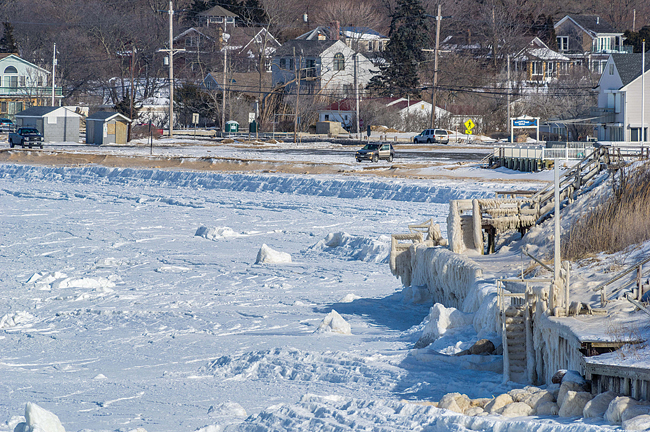Top Stories 2015: Winter weather freezes North Fork

After record-setting snowfall during the 2013-14 winter season, the North Fork was hoping for a reprieve.
Instead, winter got worse.
The area was slammed by snow again with blizzards and winter storms hitting nearly every week. According to measurements at the National Weather Service’s station in Islip, the closest weather station, Long Island saw 63.7 inches of snow from December through March — a full three feet of snow more than the average.
That snowfall total matched the previous winter’s and posed a dangerous problem for drivers and road crews.
Compounding the issue was a February that easily became the coldest on record, with temperatures averaging just 21.6 degrees for the month, a staggering 11.2 degrees below normal, according to the National Weather Service.
The weather was cold enough to freeze large parts of the Long Island Sound. It would be the first time the body of water froze in nearly 40 years. The icy water choked several ports along the Sound and made it impossible for the U.S. Coast Guard to patrol out of its station in Connecticut.
The constant freezing temperatures mixed with steady snowfall tore up local roads — especially County Route 48 and Peconic Bay Boulevard — due to “heaving,” the flexing and breaking of asphalt as temperatures shift. Cracks in the road allowed snowmelt to seep in, freezing and expanding to crack roads even more.
The Southold Town Highway Department quickly ran out of funds to repave the roads, forcing the Town Board to pump an emergency payment of $250,000 into the highway’s budget to keep the crews working. In total, the Southold Town Highway Department has spent more than $1 million in town and state funds to fix the roads.
But local road crews got a break over the past few months, as an unusually warm spell allowed highway crews to continue their repairs.
Photo: The Long Island Sound shoreline near Soundview Avenue in Southold as it appeared about 11 a.m. on Feb. 16. Just a day before freezing over, large swells as high as 10 feet could be seen in the Sound from the Southold Town beach. (Credit: John-Paul Stanisic, file)






